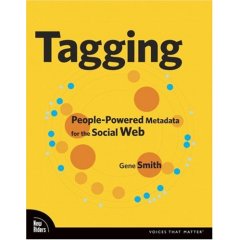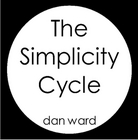May 12th, 2008 — 12:00am
The other day, over a hot corned beef sandwich from the 2nd Avenue Deli, someone asked what I’m reading now. As usual, I ended up mumbling a few half complete book titles (not sure why, but I always have difficulty remembering on the spot – probably because I’ve got four or five things going at once…).
To help fill out the list, and because I’m still doing most of my writing via other outlets, here’s a snapshot of the books scattered around my house. It’s divided into helpful categories, including ‘Books I’d Like To Start Reading Soon, But Shouldn’t, Because I’m Still Reading Other Stuff’, and ‘Books I’ve Been Meaning to Read Sometime Soon, But Probably Won’t Won’t Get To In The Near Future.’
Books I’m Reading Now
Books I’d Like To Start Reading Soon, But Shouldn’t, Because I’m Still Reading Other Stuff
Books Recently Finished
Books I’ve Been Meaning to Read Sometime Soon, But Probably Won’t Get To In The Near Future
Bonus: Things I’m probably Never Going to Start / Finish Reading
Comment » | Architecture, Everyware, Reading Room
March 17th, 2008 — 12:00am
Use the discount code FOJOEL10 to receive 10% off Rosenfeld Media books purchased online. Everyone loves a bargain!
Comment » | Information Architecture, Reading Room, Tools
March 12th, 2008 — 12:00am
If you’re interested in tagging and social metadata, social bookmarking, or information management, be sure to check out Gene Smith’s Tagging: People-Powered Metadata for the Social Web recently published by from New Riders. I reviewed some of the early drafts of the book, and it’s come together very nicely.

Tagging takes a very practical approach, and provides an ample set of examples in support of the insightful analysis. After an overview of tagging and its value, the book addresses tagging system design, tags in relation to traditional metadata and classification systems, and covers the user experience of creating and navigating tag clouds.
Gene likes to build things, so Tagging includes a chapter on technical design complete with suggested tools and tutorials for creating your own tagging apps.
All in all, Tagging is a worthy introduction to the subject, and a guide for deeper exploration.
While we’re talking books, kudos to Rosenfeld Media on the publication of their first book, Mental Models; Aligning Design Strategy with Human Behavior, by the very talented Indi Young!

Mental Models is richly illustrated, filled with examples, lucid, and accompanied by a considerable amount of additional content from the Rosenfeld Media website.
Indi has considerable experience teaching others the techniques and methods behind creating insightful mental models for audiences and customers. Cognitive / frameworky methods can feel a bit heady at times (especially how-to’s on those methods), but Mental Models is straightforward reading throughout, and an eminently practical guide to using this important tool for user experience design and strategy.
Mental Models is available electronically as a .pdf for individual and group licenses, or in hard copy; it’s choose your own medium in action.
Comment » | Reading Room, Tag Clouds, User Experience (UX), User Research
July 27th, 2007 — 12:00am
Dan Ward has created a nifty primer on the balance between simplicity and complexity in designs that is worth a look. It seems especially useful for designers facing challenges with stabilizing the vision, features, requirements, or other design drivers for a product, service, experience, etc.
The Simplicity Cycle, is “a graphical exploration of the relationship between complexity, goodness and time. It explores the natural development of system design, and highlights both the importance and the dangers of complexity. …has practical applications for artists, teachers, engineers, architects and anyone else who creates.”

A quick read, The Simplicity Cycle is nicely illustrated (replete with potential presentationware for harried consultants…), has engaging nuggets like quotes from Charles Mingus, and is free to download.
Comment » | Reading Room
November 3rd, 2005 — 12:00am
Apparently, if you wait long enough, all circles close themselves. Case in point: I’ve always thought Golding’s Lord of the Flies nicely captures several of the less appetizing aspects of the typical american junior high school experience.
And I’ve always thought that much of the reality television programming that was all the rage for a while and now seems to be passing like a Japanese fad, is simply a chance for people on all sides of the screen to revisit their own junior high school experiences once again — albeit with a full complement of adult secondary sexual characteristics. When I do channel surf past the latest incarnation of the primal vote-the-jerk-off-the-island epic, Golding’s book always comes to mind.
Then a friend recommended Koushun Takami’s Battle Royale as recreational reading. Battle Royale is, as Tom Waits says, ‘big in Japan’ – it being a Japanese treatment of some of the same themes that drive Lord of the Flies.
The editorial review from Amazon reads:
“As part of a ruthless program by the totalitarian government, ninth-grade students are taken to a small isolated island with a map, food, and various weapons. Forced to wear special collars that explode when they break a rule, they must fight each other for three days until only one “winner” remains. The elimination contest becomes the ultimate in must-see reality television.”
And so the circle closes…
Related posts:
Comment » | Reading Room, The Media Environment
September 24th, 2005 — 12:00am
User Research can be so relentlessly earnest and purposeful that it gets to be a bit stifling. After a few dozen well-crafted personas work their way purposefully through a set of mildly challenging but inevitably successful scenarios for the tenth time in one week, a diligent user researcher is likely to be hungering for something a bit more satisfying; something akin to the persona, but more fully-rounded; something that conveys the ambiguous complexity of human character with honesty; something not only insightful, but consistently forthright across a multiplicity of aspects. Perhaps even something that is genuinely malapert.
Food Court Druids, Cherohonkees, And Other Creatures Unique to the Republic is that something. Written by Robert Lanham, it’s a hilarious collection of idiotypes – stereotypes outside the design world, personas within – couched as the outcome of serious scientific inquiry whose method is called idiosyncrology.
I advise reading with humility close at hand, since it’s likely you’ll find yourself inside, and it’s only fair to laugh at everyone if you’re included…

Here’s the description:
Lanham, author of The Hipster Handbook and creator and editor of the Web site www.freewilliamsburg.com, extends his anthropological examination of Americans beyond trendy Brooklyn neighborhoods to the entire country, where Yanknecks (“rebel-flag-waving rednecks who live outside the South”), Sigmund Fruits (“people who insist on telling you about their dreams”) and others have existed thus far without being formally studied by “idiosyncrologists” like Lanham and his team. Presented with the authoritative tone of a serious anthropological study, complete with an Idio Rank Scale that assesses the weirdness of each type, many of Lanham’s profiles are hilariously accurate descriptions of co-workers, family members, friends and other acquaintances that almost every American has encountered at some point in their lives. There are the Cornered Rabid Office Workers (CROWs), who “claim to be poets or playwrights” when discussing their work with strangers, “even if they just spent the last nine hours doing data entry on the McFlannery acquisition,” and Hexpatriates, Americans who decry everything about America yet never actually leave the country (and who “refer to the Loews multiplex at the mall as ‘the cinema’ and the Motel Six by Hardees as ‘the pensione”). Illustrations by Jeff Bechtel, depicting the fashion sense of Holidorks (people who wear holiday-themed clothing) and Skants (women with shapely butts who always wear spandex pants), enhance Lanham’s characterizations.
Related posts:
Comment » | Reading Room, User Research
June 16th, 2002 — 12:00am
Slow to begin, and very, very French, my immediate reaction to this opening novel in Sartre’s Roads to Freedom trilogy is positive. It is an oddly obviously organic language, full of references to the fluids, flesh, smells, and textures of humanity; perhaps a consequence of the translation? The conclusion took me by surprise, again perhaps an after effect of losing subtleties in the translation — or the fact that most of my reading was done late at night while about to fall asleep.
Comment » | Reading Room



